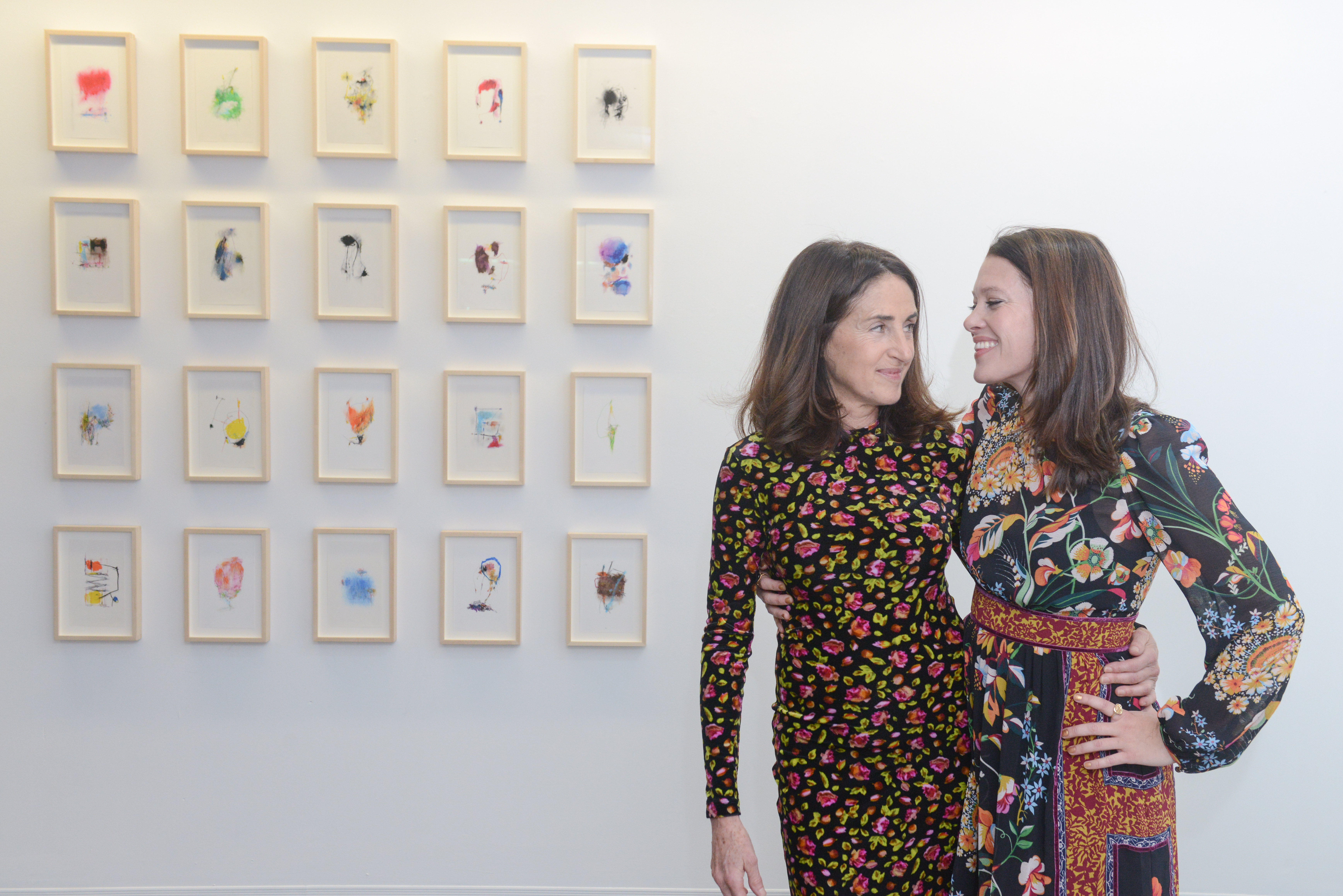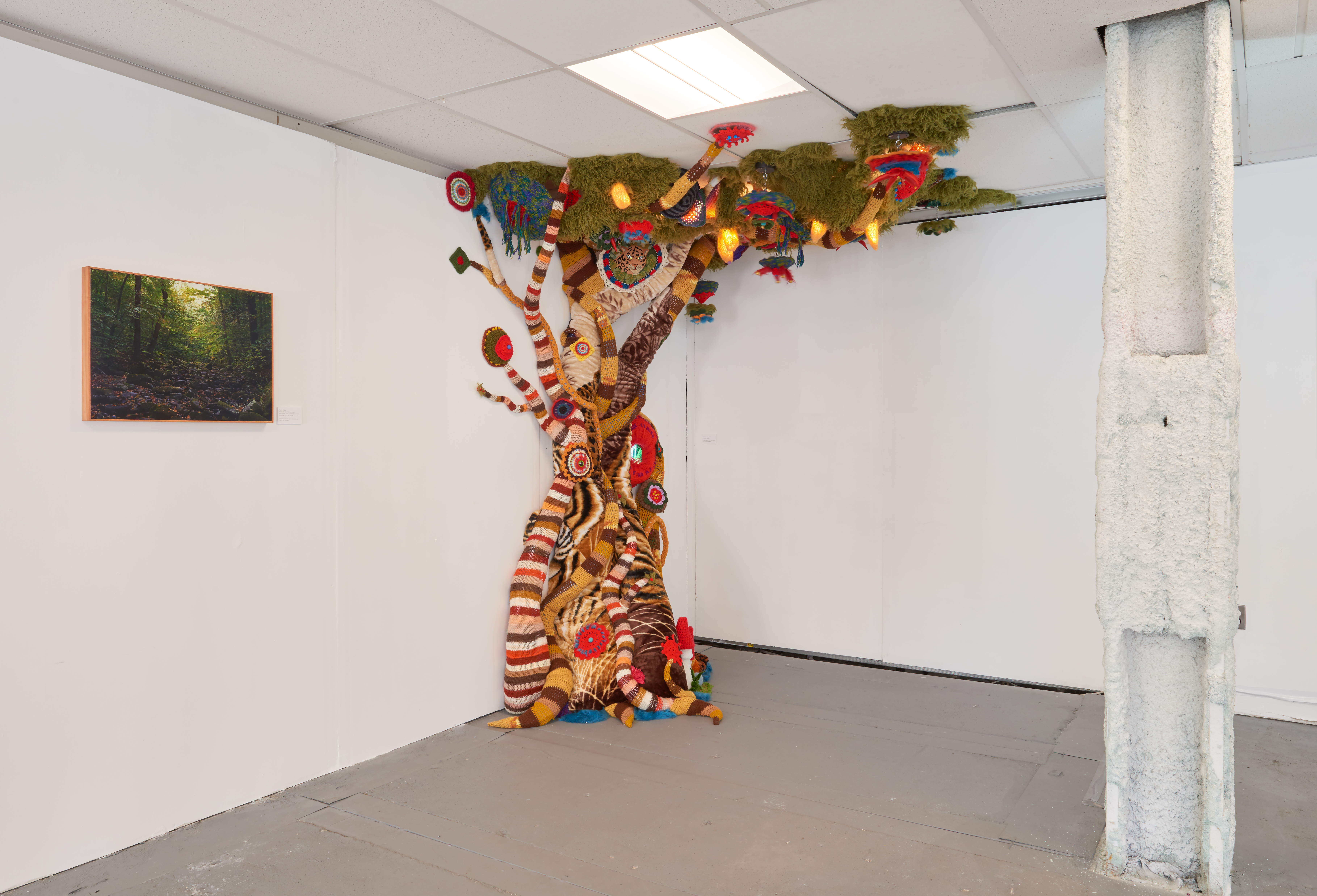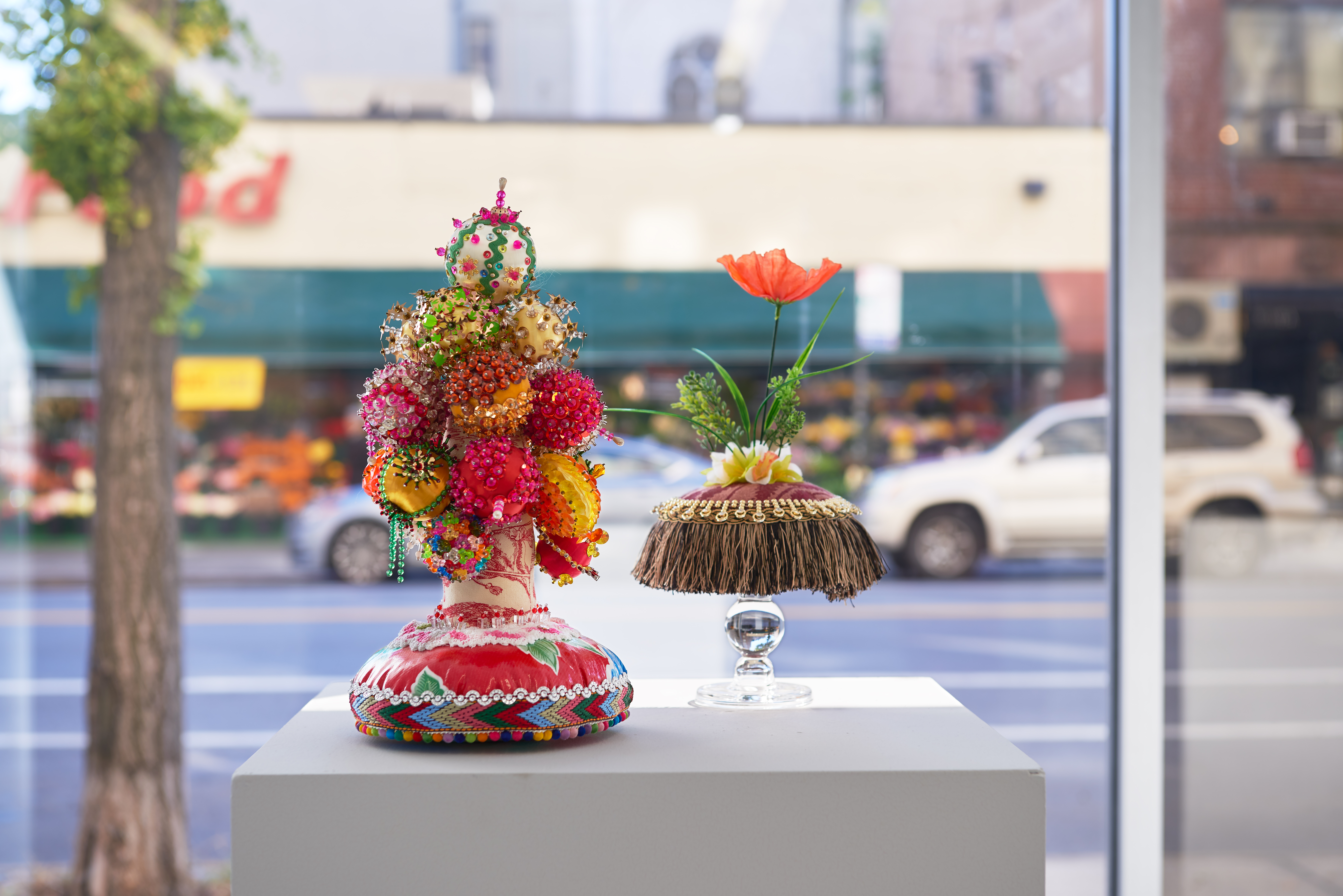The New Art Advisory That Factors Artists Into Their Sales Process


Although art advisors Emily McElwreath and Evan Pepper have placed Ellsworth Kelly and Richard Diebenkorn works in private homes they choose to present the work by nine living emerging artists in their opening pop-up exhibition in East Village. The two art-repreneurs are aware of how difficult it is to be an artist today and through their newly founded art advisory Sidel & McElwreath they want to do all they can do to help living artists while educating the advisory’s growing collector base about art and art history.
The two women met by chance, Pepper’s daughter was interning at The Brant Foundation where McElwreath worked as Director of Communication and Education. From different generations and background experiences, the duo brings much to the table. Pepper brings her zeal and a Rolodex of valuable connections from her time in the corporate world and expertise in collection management as she has built several major private art collections. While McElwreath brings communications and programming know-how helpful in creating a new type of art advisory that prioritizes artists.
We took the time to speak with them about their mission and ideas about art, collecting, and how their art advisory meets the needs of new collectors.
To mark your launch you presented “Harvest: A Convening of Materiality and Form” an exhibition in East Village in a space provided by ChasHaMa. Dirt, textiles, beads, and watercolors derived from tea were some of the materials used by Rachel Garrard, Max Colby, Hiba Schahbaz, who were amongst the nine living artists featured. What was the curatorial process like?
Emily: This fall exhibition reveals the concept of “harvest” through diverse mediums by a collection of artists reflecting their complex personal biographies. As an advisory, our main goal is to promote dialogue and education. Artistic community is important to us and through this curatorial process, we were able to build both personal relationships and curatorial connections that were only possible through the juxtaposition of a diversity of media.
 Previous: Evan Pepper and Emily McElwreath. Works by Fumihiro Matsuzaki in background. Above: Jeila Geuramian, “Forest,” 2019. Photographed by Ethan Browning.
Previous: Evan Pepper and Emily McElwreath. Works by Fumihiro Matsuzaki in background. Above: Jeila Geuramian, “Forest,” 2019. Photographed by Ethan Browning.
The myth of the art advisor is that they are discrete and have the expertise to select the best works and the network needed for their clients to gain access to acquire them through galleries, auction houses, private collections, and the odd artist’s studio. What mythologies about the art advisor do you and Evan play into and which ones do you dispel?
Emily: We basically subscribe to this definition however we recognize that “best” is subjective. We work very closely with our clients to find the “best” work for them, though “best” can be defined and mythologized in various ways. Perhaps one of the most overt ways in which we question traditional definitions of the advisor is by factoring the artists themselves into the process.
There are many people out there that call themselves art advisors. We believe that in order to advise on anything you need to be completely educated in that particular subject matter. Credentials and experience are necessities in addition to building personal relationships with our artists.
You previously held a position in education at the Brant Foundation, which is an extremely interesting collection. What skillsets and experiences from there will help you in your work with Sidel & Mcelwreath?
Emily: As director of education at The Brant Foundation I was lucky enough to focus on education as the forefront of my professional experience in the art world. The skills through which educational programming is envisioned, developed, and then executed on takes into account a host of communications activities that are also shared by the advisory process. You come to recognize that certain programs or artworks will appeal to certain audiences and you help the client uncover the reasons by which they become impassioned or enthusiastic about those artists and their work. To this day, that emphasis on a “critical eye” continues to be the driving force in our company’s mission.
Artists in America are in a precarious financial situation today as fine art degrees (with rising tuitions) are increasingly a prerequisite to make it leaving artists in debt early on in their careers. I admire you for putting artists needs front and center in your mission statement. Tell me a little bit more about Sidel & Mcelwreath’s Artist Fund.
Emily: We are aware of how difficult it is to be an artist today and will always do what we can to factor the artist back into the process, as they are a critical player in the building and management of thoughtful art collections. Currently, we have arranged to offer a percentage of our profits to underwrite a grant at the Wassaic Project for an artist residency. We aspire to do more in the long-term.
I love the child-like drawings by Fumihiro Matsuzaki in your online viewing room, they are charged with anxieties and movement. What is his studio like and what drew you to his work?
Emily: We love everything about his work. The emotion, style and aesthetic. This all drew us to his sublime abstractions.
Further, Matsuzaki is an example of an artist with whom we have a close relationship. He works from a rather intimately scaled studio and therefore his work tends to be on a more intimate scale. That said, through our conversations with the artist we’ve come to recognize that scale is both a technical and aesthetic choice on the part of the artist, but also simply a result of circumstance. We’ve come to understand that the artist would welcome the opportunity to play with different scales and media, should he at some point have the opportunity to move into a larger studio, with different resources.
This could perhaps be understood as one of those considerations that arises when you have a personal relationship with the artist.
Although you wish to focus on living artists you have placed art works by deceased artists such as Ellsworth Kelly and Richard Diebenkorn. What are the challenges with trying to focus on living artists and how are you navigating them?
We haven’t confronted all too many challenges associated with introducing our clients to new artists as they are considerably open and interested in learning about new work. We share with our clients the belief that one of the things that makes life rich is the mix. Works by deceased artists enrich and inform the newer work, adding layers of context. This diversity speaks to a broader canon of art history and we tend to work with individuals who see the value in this approach.
 Max Colby, “Grand Stand” and “Bed 5,” mixed media and found material, 2019.
Max Colby, “Grand Stand” and “Bed 5,” mixed media and found material, 2019.
When I spoke to you last you said that Sidel & McElwreath is uptown meets downtown – I loved this comparison. How did you and Evan meet and how to you compliment each other?
Emily: I met Evan when her daughter Lucy interned for The Brant Foundation. We became close friends and later, through a shared love of fine art, business partners. We were both born in NYC, though one of us spends most of her time uptown and the other downtown, which lends itself to discovery of different artistic communities, exhibitions, and frames of reference from which we can collaboratively work.. We are also multi-generational— as is the case with our community of artists—which brings depth and flavor to our expertise.
Evan: We bring unique life experiences to form a balanced perspective and attitude to our work.
What is your most memorable art world experience?
Emily: I had a meeting at the Metropolitan Museum of Art during the early evening years ago. When I left the museum had closed to the public and I was able to walk through the galleries alone and in silence. It was pure magic. Seeing Warhol’s “72 Shadows” installed at Dia: Beacon also took my breath away.
Evan: I grew up three blocks from the Met. At the time the Met had a children’s museum in the basement. I spent countless hours at a control panel where children could choose the medium of a work of art. Studying the art itself and its diversity of media launched a lifelong love and curiosity about art.
What were the worst art trends of 2019?
Evan: Trends in fine art don’t really speak to us at all. Quality art is quality art. Period.
Emily: From a communications point of view, an unfortunate trend that isn’t going anywhere is social media influencing the way we experience art. We are all guilty of this. Getting the best “shot” instead of turning your phone off and taking it in organically.
We are on the doorstep of a new decade! What do you hope will be roaring about the 2020’s?
Emily: A continued dialogue surrounding the importance of women, black, and LGBTQ artists.
Evan: In addition, a rise in young collectors.
What is your dream project for Sidel & Mcelwreath?
Both: A public art project featuring works by emerging artists.
Related articles
What's Your Reaction?
Anna Mikaela Ekstrand is editor-in-chief and founder of Cultbytes. She mediates art through writing, curating, and lecturing. Her latest books are Assuming Asymmetries: Conversations on Curating Public Art Projects of the 1980s and 1990s and Curating Beyond the Mainstream. Send your inquiries, tips, and pitches to info@cultbytes.com.

